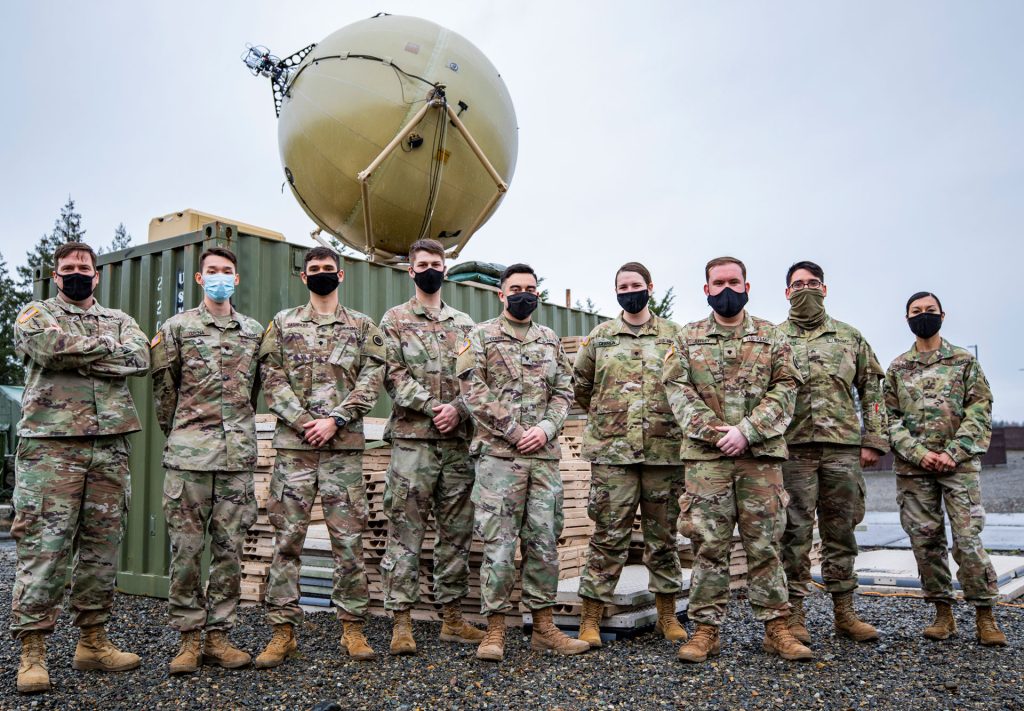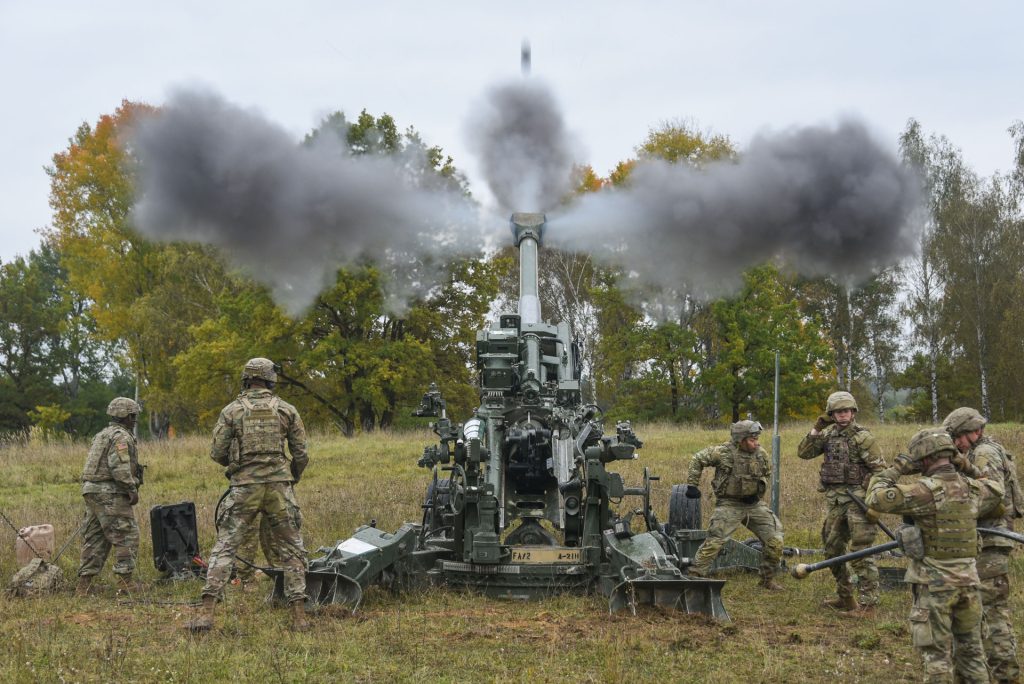
By thoughtfully destroying old habits and processes, the Army can challenge the status quo to become stronger and more powerful.
by Dr. Bozena “Bonnie” Berdej, Col. Anthony R. Gibbs and Peter J. Burke
The U.S. Army cannot ever be stationary. It must challenge the status quo to address new threats entering the sphere. Creative destruction is an effective way to do this, but situations emerge in which the perennial gale of creative destruction can be either controlled or rampant. Without emotionally intelligent leaders, it can be devastating. For example, let’s look at COVID-19 as out-of-control creative destruction. Viruses mutate. However, it is hard to recall another virus spreading this fast, and with so many variants. Since March 2020, we have seen alpha, gamma, beta, delta and, now, omicron. Each new variant seems to destroy the one before it, but also builds on the last variant to become stronger and more destructive. Each successful new iteration of the virus that becomes predominant does so because it improves on the “mission” of keeping its genetic line alive. As with viruses, such is also the case with creative destruction in organizations. The organization destroys the old only to become stronger and more powerful, but with deliberate intent and planning.
Daniel Goleman, in his 1998 study titled “What makes a leader?,” talked about effective leaders who have the desire to make their organization better. It is that desire that drives innovation and controls creative destruction, and it stems from the emotional intelligence of a leader. The careless practice of destroying something solely in order to introduce something new should be stopped. Instead, emotionally intelligent leaders need to take control of unexpected change, reorganizing it and turning it into strategically sound innovations. In this way, creative destruction offers a modern, more logical way to innovate.

BREAKING BOUNDARIES: Cross-functional teams are a good example of effectively applying creative destruction while breaking boundaries. (Photo by Pfc. Karleshia Gater, I Corps)
CREATIVE DESTRUCTION IN ACTION
The 155 mm Cannon Delivered Area Effects Munition (C-DAEM) program provides a good example of applying creative destruction to stay ahead of the threat.
We know by now that the “gale of creative destruction”—as described in the originally proposed creative destruction methodology—takes place regardless of our understanding. It has tendency to come unannounced, just as COVID-19 did. It mutates and continuously revolutionizes the organizational structure from within. It incessantly destroys the old variant and incessantly creates something new—good and bad, until it is stopped and effectively controlled. Our leaders have learned from the past that emulating the status quo frequently ends in disaster. Instead, they faced the unexpected change and urgent requirements with thorough analysis, delivering next-level target-seeking and precision-guided technology. They reevaluated their assets by reviewing available resources, skills, designs and contract vehicles. Then, they capitalized on the knowledge and experience that had developed around these assets.
Teams of intellectually minded individuals supporting the Project Manager for Combat Ammunition Systems (PM CAS), including Pete DeMasi, Jim Sarruda and Rob Casale, were put in charge of recombining and counterbalancing creative destruction processes and existing structures, such as contract vehicles and agreements, processes and diffusing necessary knowledge to initiate innovative approaches, which resulted in C-DAEM. This program, initiated in 2016 to replace the Army’s aging stockpile of cannon-fired cluster munitions, consists of two increments. Increment 1, or C-DAEM Armor, is focused on defeating relocated or moving medium and heavy armor targets at extended ranges, whereas Increment 2, C-DAEM Dual-Purpose Improved Conventional Munition Replacement, is focused on defeating personnel and lightly armored targets. Focusing on the C-DAEM Armor program, PM CAS had two very different material solutions to choose from: a technically mature and well understood existing solution known as a sensor fuzed munition, and a new combination of existing technologies to create a hit-to-kill projectile solution. Specifically, the hit-to-kill solution involved integration of GPS and inertial guidance with a terminal seeker and shape-charge warhead, a new and unproven combination for cannon artillery.
In evaluating these very different material solutions, PM CAS worked with the user community, including the Long Range Precision Fires Cross-Functional Team and Fires Center of Excellence Capabilities Development and Integration Directorate, to identify and prioritize the key metrics for selection. This team effort resulted in an objectives hierarchy, evaluating the schedule, performance, cost and long-term viability of available solutions. The performance objective was further broken down into a range-weighted lethality index encompassing many different use cases that covered a range of conditions and scenarios.
The objectives hierarchy and range-weighted lethality index provided a useful lens through which to evaluate the two very different solutions. Whereas the existing sensor fuzed munition provided the lowest technical risk and best solution in terms of schedule and cost, the hit-to-kill provided a clear advantage in performance potential and long-term viability. The objectives hierarchy and range-weighted lethality index put into context the trade-offs between going with the known, low-risk solution and pursuing the high-risk, high-reward solution with the potential to revolutionize how cannon artillery is used.
PM CAS used creative recombination and counterbalancing to alleviate the cause of creative destruction, such as revolutionizing without evidence, constant strategic execution or development of new initiatives without a chance to take off. In the past, programs would be initiated as high priority, and several months into the effort they were no longer high priority programs. To avoid these types of creative destruction setbacks, PM CAS leaders combined the assets in a new and successful fashion, counterbalancing the good and the bad that come with it.
PM CAS worked with stakeholders and community leaders to carefully control and analyze the process. Teams of emotionally intelligent leaders took time to develop an effective “defense system” against uncontrolled creative destruction. They set up processes and processes within processes such as breaking down an objectives hierarchy into target-specific requirements. As a result, they established a good model to follow in selecting more rewarding solution with potentials for the future. Teams focused on a specific goal, reviewing and discussing the potential risk. Ultimately, they eliminated rework and moved closer toward achieving the goal.
Cross-functional teams—effectively applying creative destruction while breaking traditional boundaries.
Cross-functional teams demonstrated both effective management of creative destruction and emotionally intelligent leadership. In large organizations like the Army, timely application of creative destruction requires a new way to work across traditional and organizational boundaries. For example, in order to quickly implement change in reaction to a new threat or to stay ahead of the competition, the sequential developmental model must change. Therefore, Army leaders decided to use a new approach: Put the requirements managers, material developers, testers, trainers, logisticians and resourcing organizations together in a single cross-functional team to enable transparency, faster communication of ideas and effective decision-making. This new approach directly manages creative destruction and its negative impacts and has proven effective.
Members of cross-functional teams are typically at the colonel or senior civilian level and are empowered to speak for and direct their organizations toward a common goal. Issues in one area are quickly surfaced for all to understand, consider and, when needed, act upon. Sequential development of ideas into a product turns into collaborative treatment by multiple stakeholders working in parallel, whereby plans can be adjusted much faster.
WHAT HAVE WE LEARNED?
The above examples demonstrate that leaders are no longer ignorant of the destructive effects of creative destruction. The concept has proven beneficial when, unlike COVID-19, it was guided and controlled. It is important to understand that creative destruction requires emotionally intelligent leaders because only such leaders can manage the process, keeping people and organizations in mind. Emotionally intelligent leaders are aware of their moods and their thoughts as well as those of others. As a result, they can effectively reinvent processes that work while eliminating those that don’t.

ONE STEP AHEAD: The C-DAEM program is a good example of applying creative destruction to stay ahead of the threat. (Photo by Markus Rauchenberger, Training Support Activity Europe)
CONCLUSION
The world is ever-changing and there is no room to fall behind. The Army has to operate in a challenging, multidimensional environment. This requires that Army leaders effectively manage creative destruction to achieve overmatch, deter and defeat current adversaries, and win and protect our freedoms. The Army cannot afford the consequences of out-of-control creative destruction which equals poor reasoning or outsourcing critical thinking. The originally proposed creative destruction methodology and its destructive components must be controlled and ultimately eliminated.
Along with effectively managed creative destruction, organizations need emotionally intelligent leaders who act logically and with the desire to make their organizations better. Those qualities allow them to communicate and leverage all emotions, good and bad, and deliver the desired organizational outcomes while eliminating the negative side of creative destruction. As in the examples above, such leaders attract innovation and deliver unmatched results. They refuse to validate mistakes; instead they tirelessly race to be ahead of their competitors by taking careful approaches that innovate but also protect their organization. This continuous balancing act requires just the right level of self-examination and knowledge about ways to innovate—ways to understand when decisions are right, but also to acknowledge when decisions are wrong.
For more information on creative destruction, contact Dr. Berdej bozena.berdej.civ@army.mil; for more information on C-DAEM, contact Col. Gibbs at anthony.r.gibbs6.mil@army.mil; for information on cross-functional teams, contact Peter J. Burke at peter.j.burke.civ@army.mil.
BOZENA “BONNIE” BERDEJ serves as the business management specialist supporting the acquisition team of the Project Manager for Combat Ammunition Systems (PM CAS) within the Joint Program Executive Office for Armaments and Ammunition (JPEO A&A) at Picatinny Arsenal, New Jersey. She holds a doctoral degree in management from University of Maryland University College. She is Level III certified in program management and holds Black Belt Six Sigma certification.
COL. ANTHONY R. GIBBS is the PM for Combat Ammunition Systems within JPEO A&A. His 24-year career includes 12 years of acquisition experience in a range of contracting and program management positions. He is Level II certified in contracting and Level III in program management, and he holds an MBA and a B.S. in mechanical engineering and is a graduate of the Eisenhower School of National Defense University.
PETER J. BURKE is the deputy PM for Combat Ammunition Systems. He is Level III certified in program management. He holds an MBA from the New Jersey Institute of Technology and Florida Institute of Technology, and is a graduate of the General Management Program from Harvard Business School.







